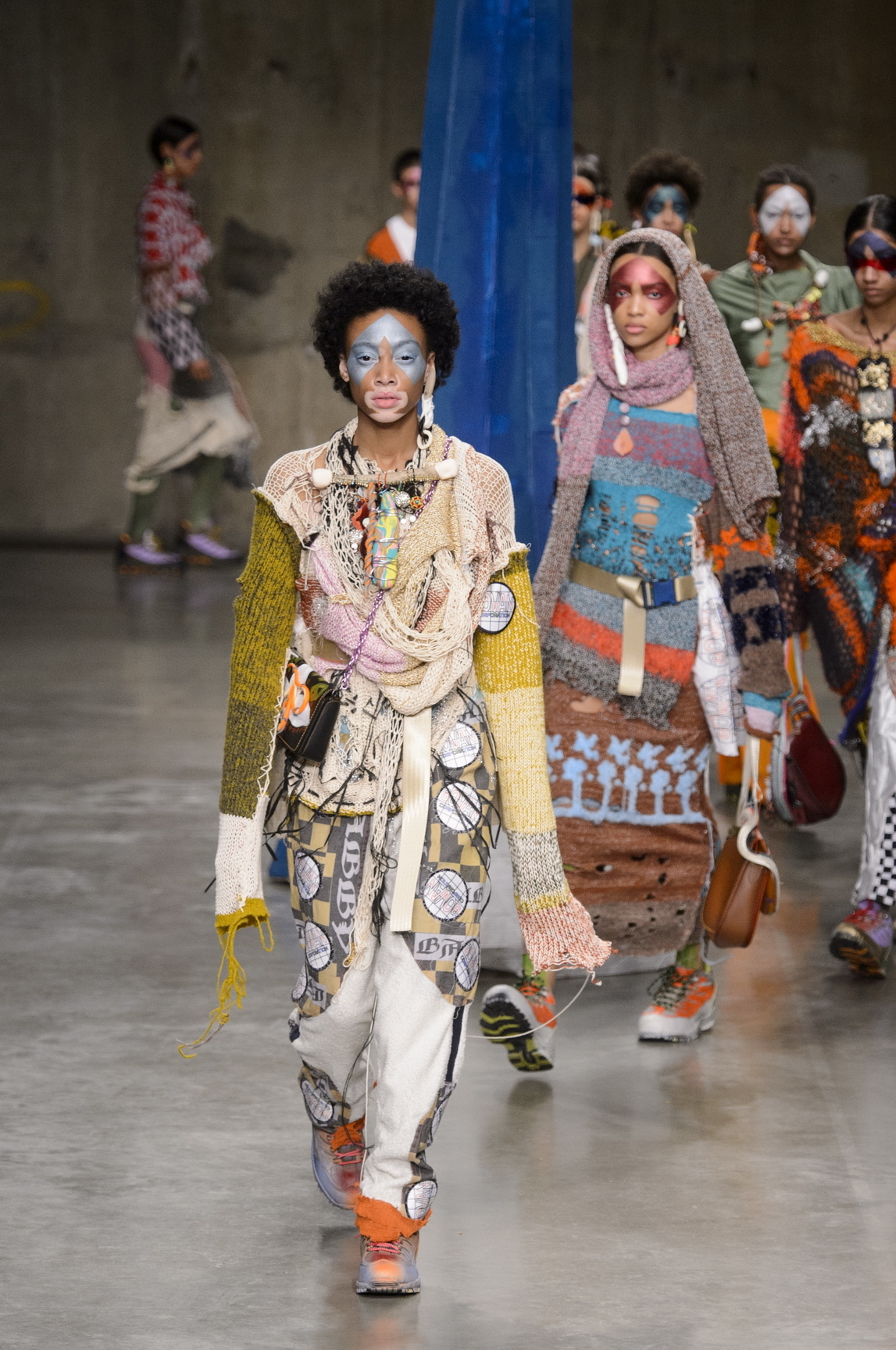Making a statement has never been an issue for the eternally young designers of London, who traditionally forfeit commerciality for the greater message — and the bigger statement piece, too. If this was always the idea, it hasn’t totally been the case in recent years. The necessary evolution of London Fashion Week meant that designers had to grow up, get a proper business, and — gasp! — gentrify in order to stay afloat. Ten years on from the club kid revival that hit East London around 2006 and paved the way for some of our most successful designers today, a group of graduates from Central Saint Martins’s MA came along in 2015 and reminded this city what its emerging fashion is all about. “Maybe in ten years, in hindsight, it will be easier to see what was kind of happening. When you’re in it you can’t,” Matty Bovan said after his fall/winter 17 show, which closed Fashion East. “Luckily everyone I’m friends with is doing really good things so that’s really nice.” One of them is Charles Jeffrey, the current star on Fashion East’s menswear platform MAN, who shares with Bovan an affinity for a full face of makeup, as Joan Collins would have it, and a thinly veiled admiration for the great exhibitionists of 80s and 90s fashion, from John Galliano to Jean Paul Gaultier and Dame Vivienne Westwood. Together, these new princes of London are bringing the hyper-referential sensory overload of those designers to a new generation of fashion fans, and recycling the creative energy that hits this city like a messianic comet every ten years or so.
Read: Central Saint Martin’s MA show kicked off London’s women’s shows on Friday night.
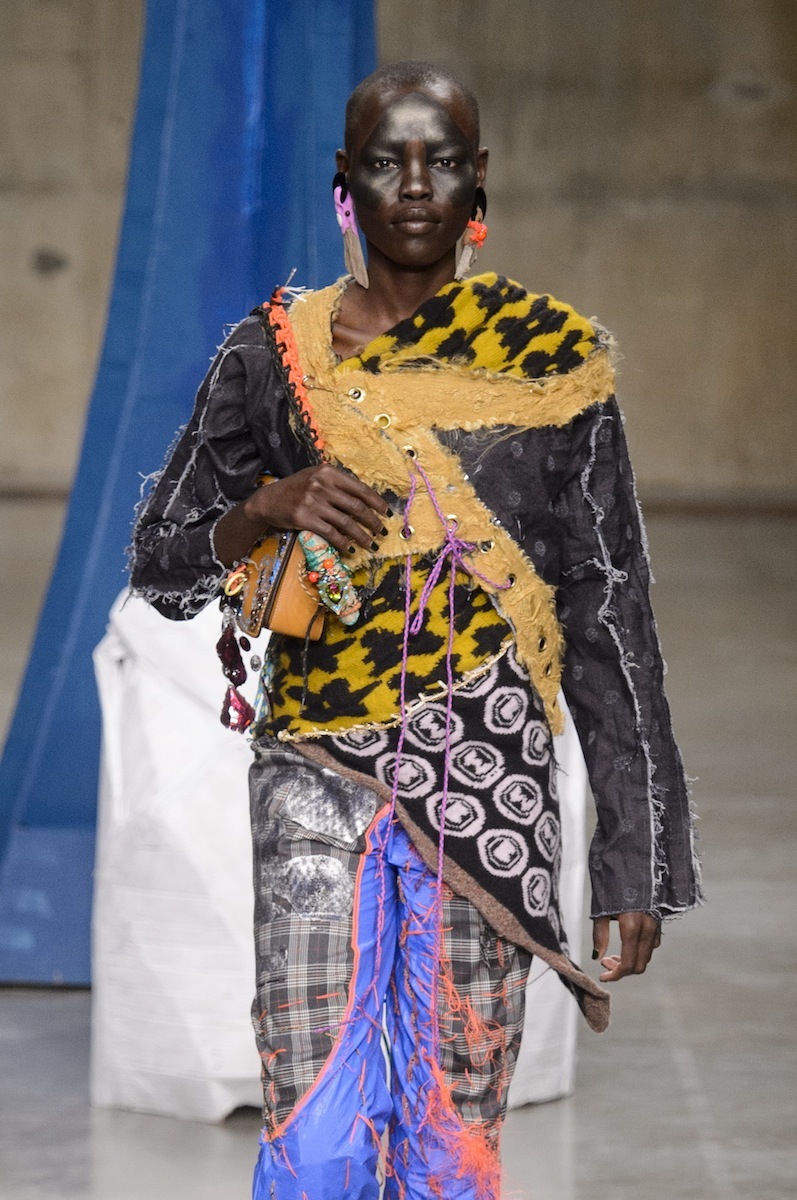
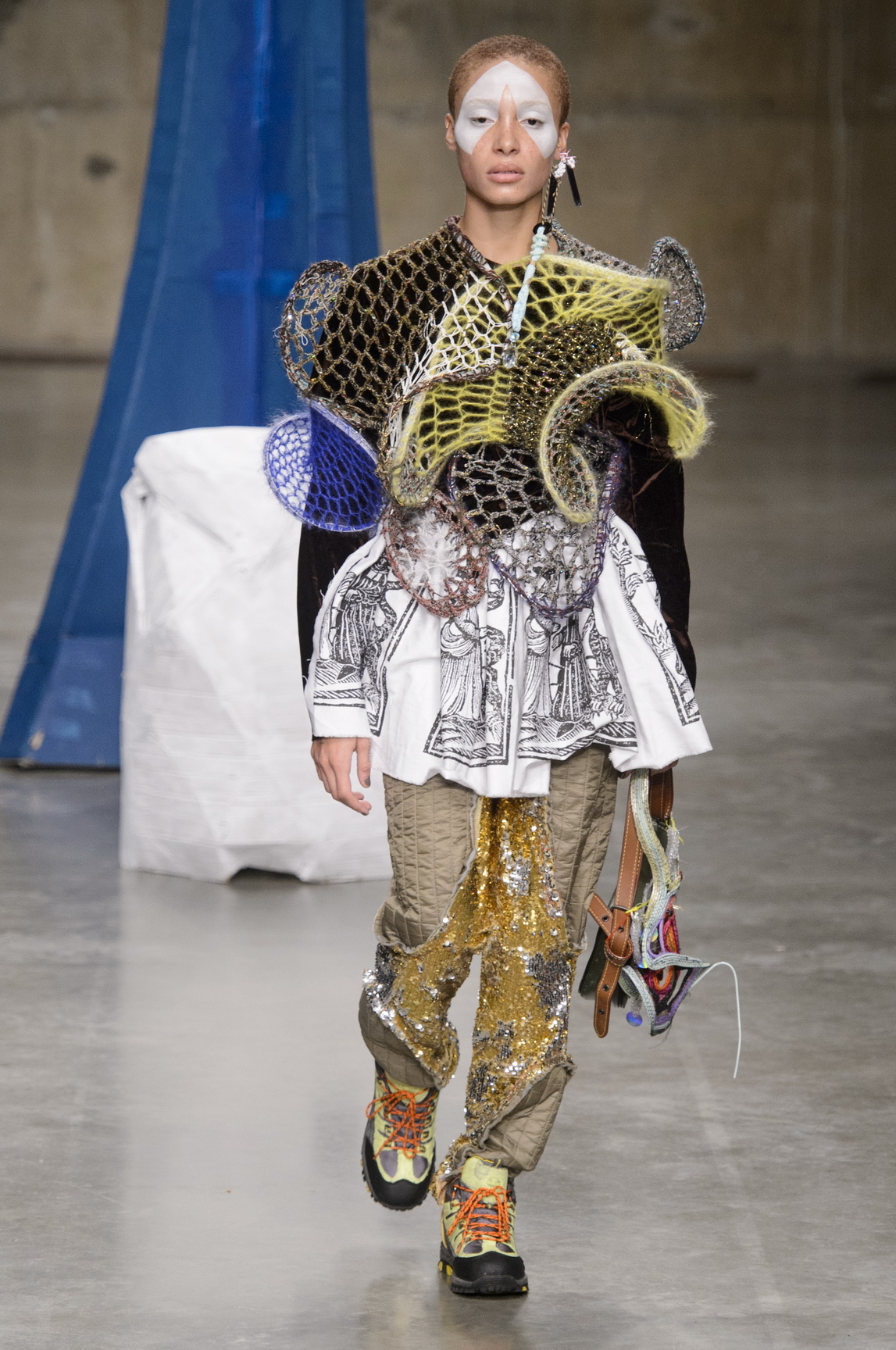
“I was watching Alien and Blade Runner, and all the evil personas in these films are corporations and companies. The have these heavy, weighted names,” Bovan said backstage, wearing one of the big yellow performance jacket with reflectors on it and a logo that read ‘Bovan Corporation’. The graphic appeared throughout his collection in the sea of rootsy, homespun, back-to-basics textures that made up his tribal futurism. “I liked the mass-produced shiny-looking fabrics against old materials. It kept the edge of this sinister, corporate shadow,” he reflected, hinting at the new anti-establishment he now co-represents whether intentionally or not. “I’m not a political designer, but obviously with what’s going on in the world I can’t help but be affected by these decisions, because it’s very hard and very bleak, and everything is changing very quickly. It’s scary. So the woman in this collection was fierce —quite strong. You need that energy to hit the punch without being too aggressive,” Bovan said. “It was some sort of dystopian medieval sci-fi future I was seeing.” His gritty sci-fi had an electric sense of folklore about it, a kind of Armageddon of the ages, which was equal parts gloomy and optimistic. After all, great creativity has always welcomed darkness, that old friend. Naturally, Bovan’s spectacle — presented in the Turbine Hall of Tate Modern — had to come with an elaborate set. That’s what one does as part of the new generation of London designers, and it was a recurring element on this Saturday of shows in the city.
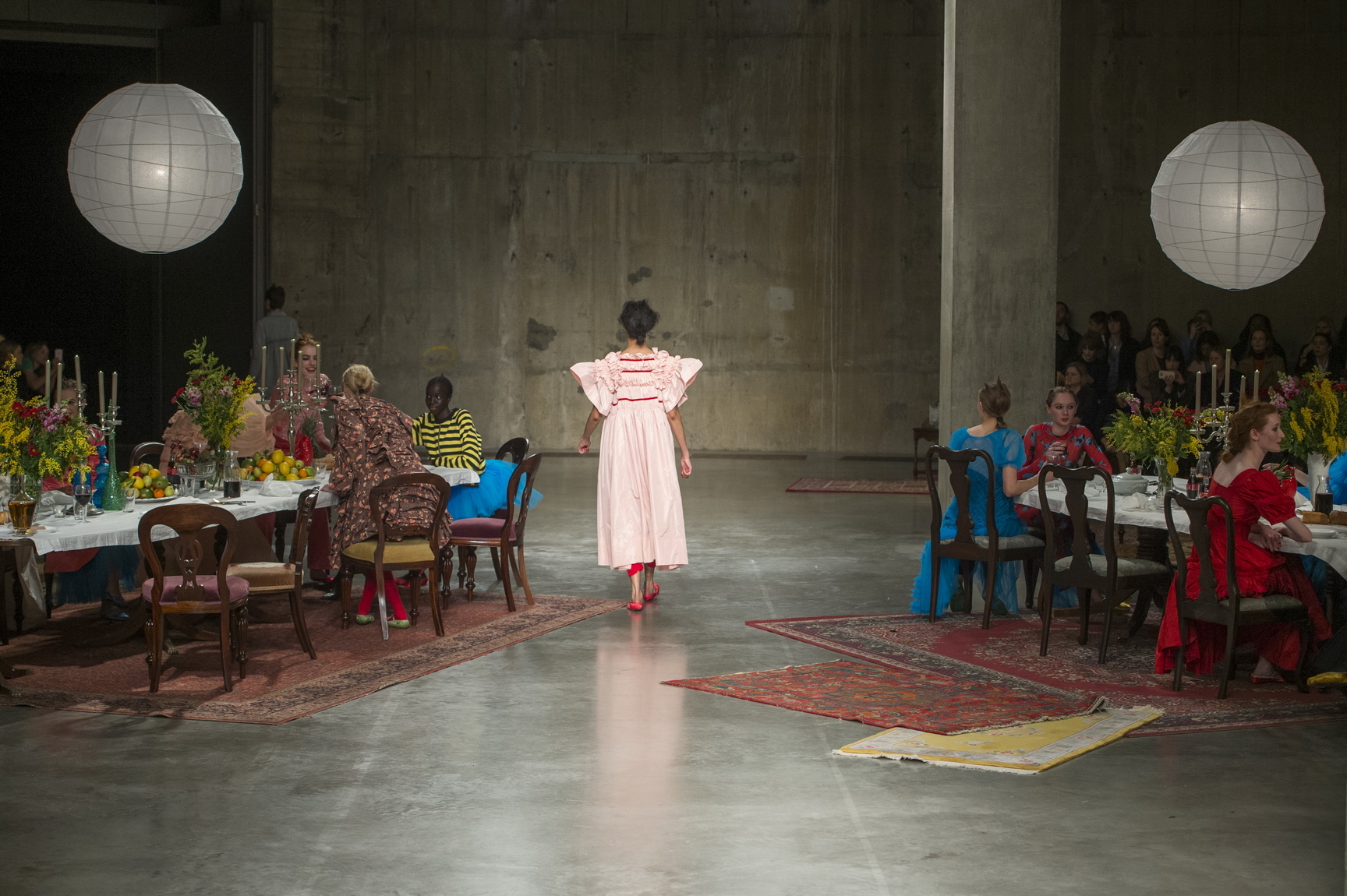

Bovan’s models walked in an apocalyptic bigature city of papier mâché skyscrapers, while Molly Goddard’s girly-girls perched at two big banqueting tables in the designer’s suitably statement-y tulle creations. Her set was based on the idea of a family of all ages getting together for supper. “I was thinking about how you evolve in the way you wear your clothes throughout your life,” Goddard said, echoing Simone Rocha, whose models later in the day span from teenagers to pensioners. “It’s for all types of women, and I really want to reflect that. It’s something I really built my identity on, so I like to be able to share that,” Rocha said after her show at Lancaster House. Her collection channelled a kind of old-world glamour expressed in big (faux) fur stoles that adorned the flower-embroidered buoyancy, Victorian dresses, and scaled-up shapes Rocha’s ever-expanding fan base goes mad for — a statement approach to fashion that seems to resonate with people right now, and which Molly Goddard very much shares. Her ballet-inspired banquet went all in on the dimensions, blowing up her signature tutus and layer-cake tulle gowns to new proportions. “I just always liked to do bigger and… bigger,” Goddard quipped backstage. “Like the big blue one,” she said, referring to a house of a tulle number, “was actually meant to be half the size but we didn’t realize that the fabric was 3 meters wide rather than 1.50. And everyone was worried they’d made a mistake, but I was like, ‘Don’t worry. Because it’s bigger!’ The bigger the better.” It could have been the tagline for Saturday’s shows in London where every designer got that memo — literally or figuratively.
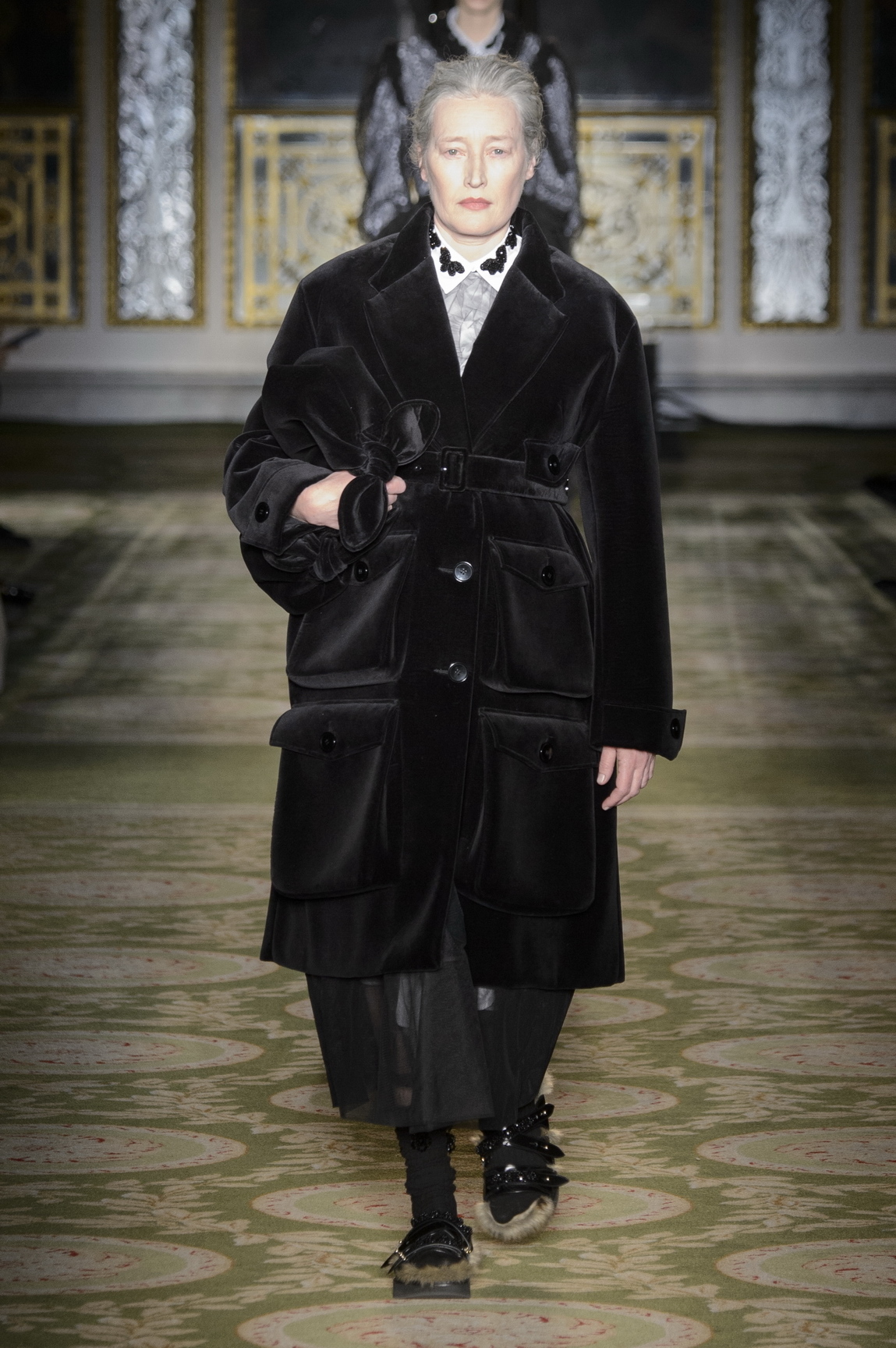
Donatella Versace staged her Versus show in Olympia where the Antwerp Six first debuted their revolutionizing Belgian avant-garde to the British fashion buyers when young Dries Van Noten, Ann Demeulemeester, and co. loaded their collections onto a bus, crossed the Canal, and set up stall there in 1987. If theirs was a statement that would change fashion forever, the Versace matriarch’s concern was focused on the spirit she wants to convey to the youth, who wears her urban Versus label. “Fashion has the power to send out a message of hope and unity, especially to the new generation. Versus is about passion, optimism, and a fierce statement of equality,” she said in show notes emailed to the press after the show, opened by Gigi Hadid and closed by Bella. (Versace didn’t invite press backstage, perhaps hoping to avoid cheeky questions about the rumors circling that her pal Riccardo Tisci — who just left Givenchy — could be going joining the house in March.) At Gareth Pugh, the statement carried similar weight in an all-black collection of the 40s tailoring the designer — who fronted London’s last thrilling generation of emerging designers ten years ago — loves. With a frenzied soundtrack of Trump supporters chanting “build that wall” and Madonna’s voice repeating the words “you put me in a trance” from Erotica, Pugh’s show a “vision of a world on the precipice of anarchy,” as he wrote in the page-long manifesto he wrote to go with it.
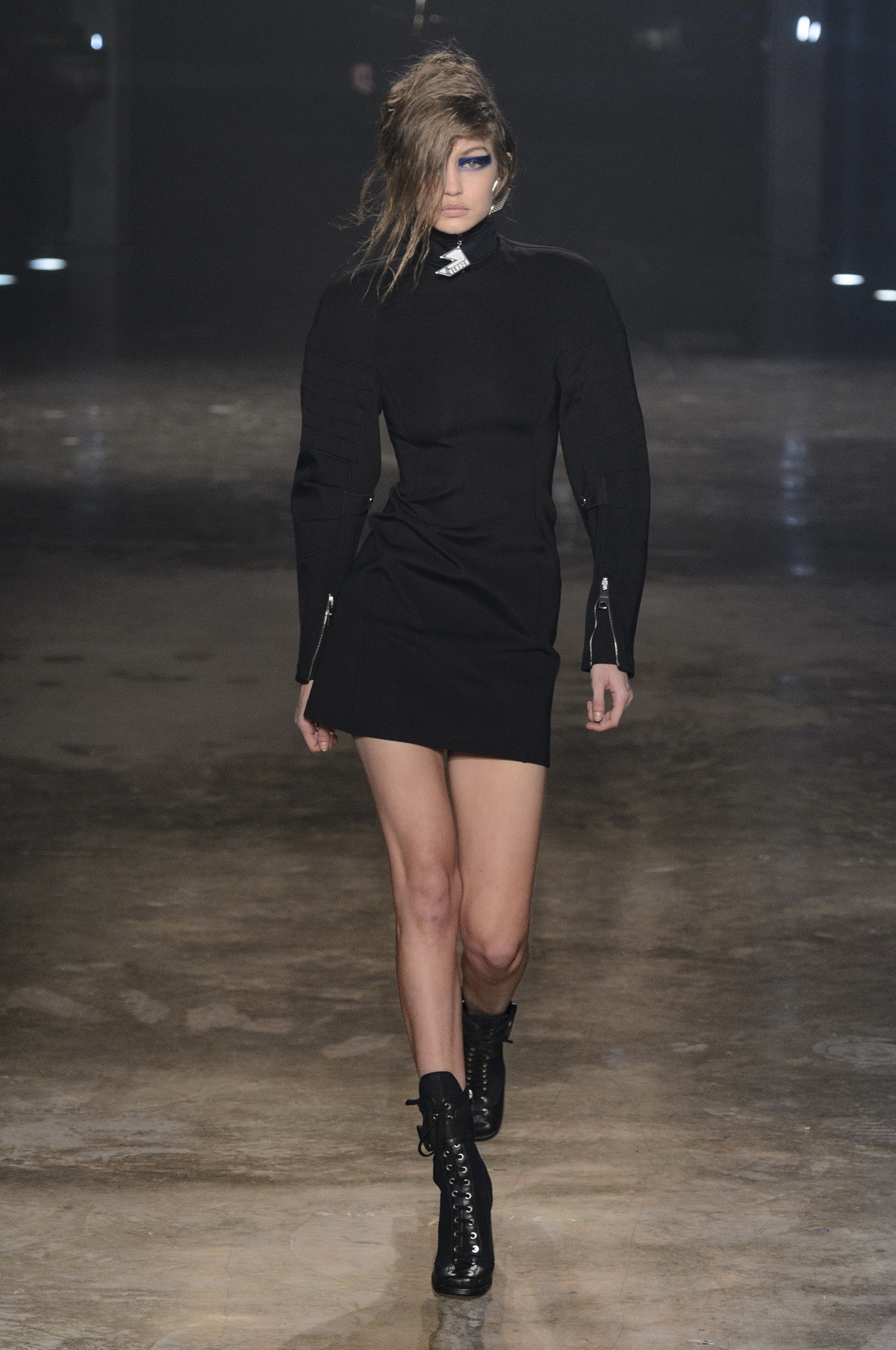
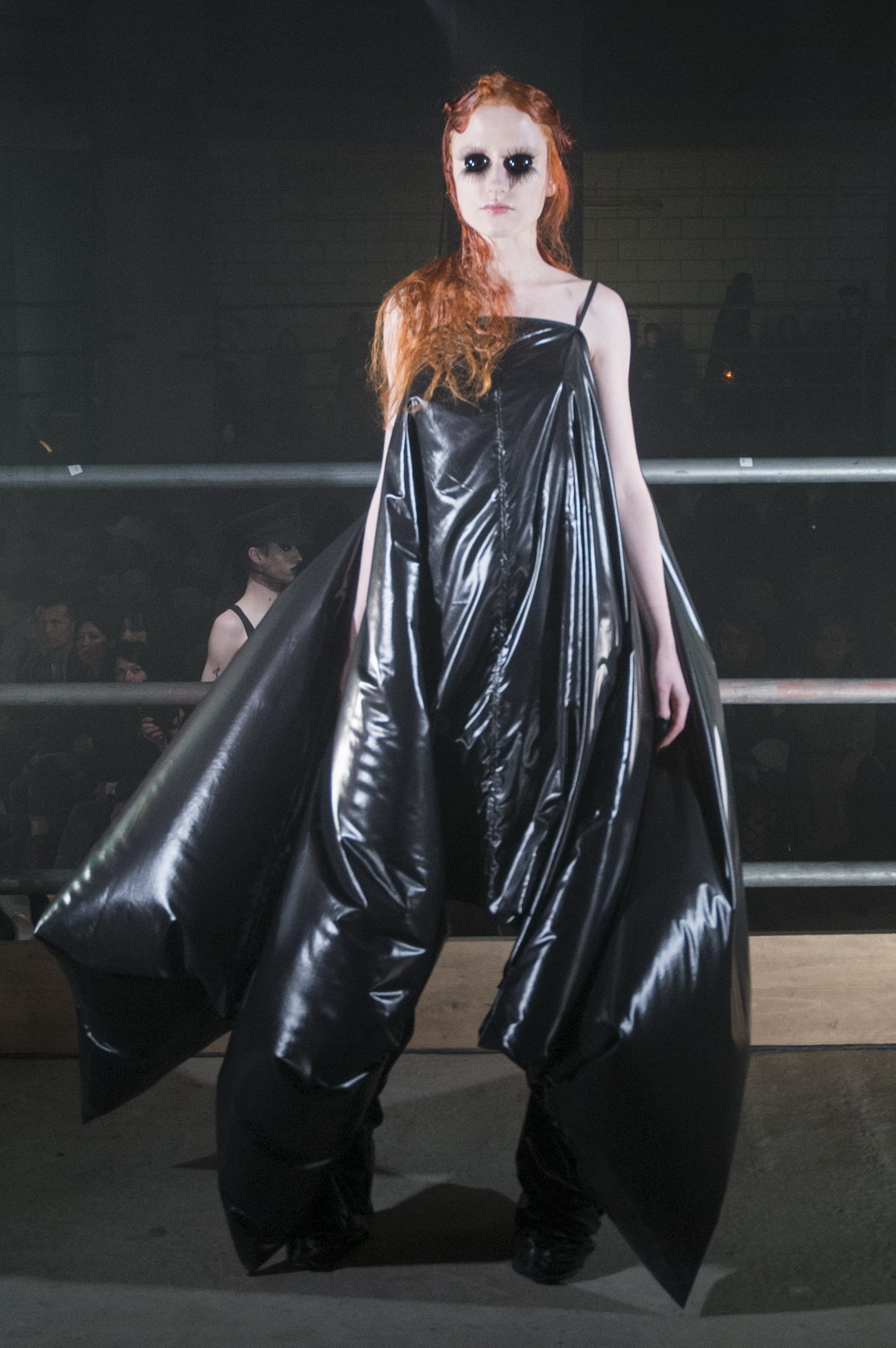
For the New York-born designer Michael Halpern, who graduated from Central Saint Martins last year with a much-praised MA collection based on costumes worn by horse-diving women in the 20th century, the big statement was in the craft. In his first standalone show — orchestrated, incredibly for a debuting designer, by stylist legend Patti Wilson, hair king Sam McKnight and makeup star Lyndsey Alexander — Halpern elaborated on the heavy sequins that defined his graduation collection, focusing on the divas of the Studio 54 and the post-party experiences that would follow their wild nights out. His masterly constructed bustiers, jumpsuits, and flared trousers, some of which reached couture heights in handwork, imagined the flamboyant sequin creations in the fluorescent lights of a late-night diner or the early morning sunlight of an unassuming street corner. Like Matty Bovan’s collection, Halpern’s work felt new and exhilarating: a statement for a reinvigorated London fashion scene where emerging talent is once again at the forefront. And in that transition, Kate Moss’ faint whispers on J.W. Anderson’s soundtrack in the afternoon couldn’t help but echo in your head throughout the day — Anderson himself a product of London ten years ago. “Flowers are the things we grow. Secrets are the things we know,” the model sang, backed up by Primal Scream on the track “Some Velvet Morning.” “Learn from us very much. Look at us but do not touch.”
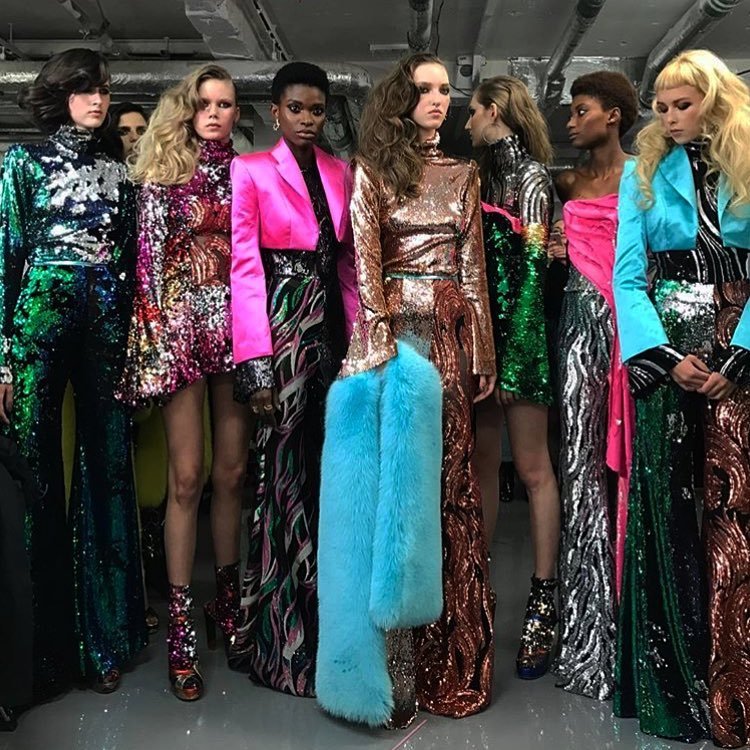
Credits
Text Anders Christian Madsen
Photography Mitchell Sams
